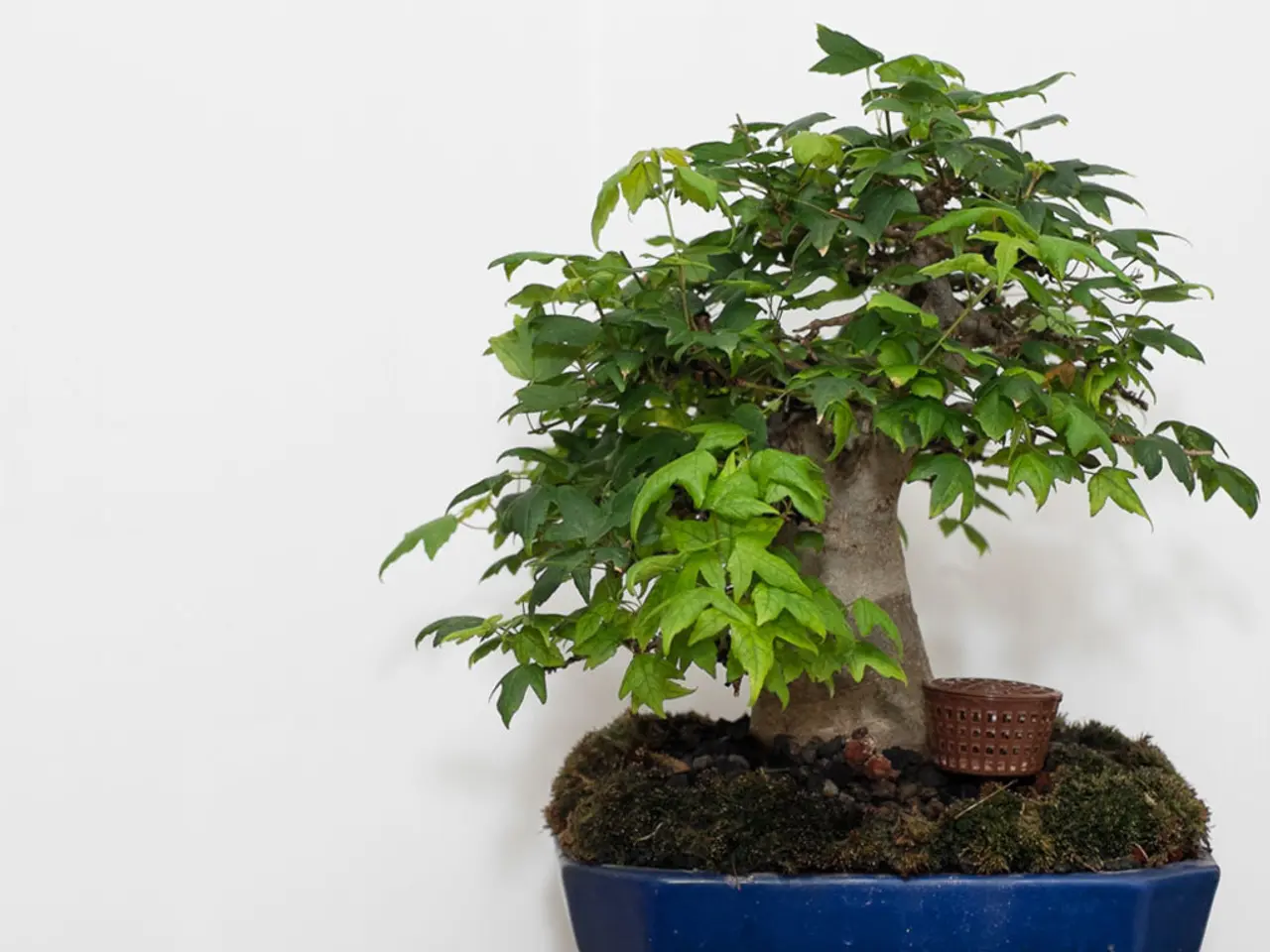Replanting Trained Bonsai: Guidelines and Growth Factors to Consider
Repotting bonsai trees is a crucial aspect of their care, particularly for those under training. By focusing on key aspects such as evaluating the tree's health, precise root pruning, selecting appropriate potting media, and coordinating repotting with training techniques, bonsai enthusiasts can reduce stress and encourage balanced growth.
Evaluating the Tree's Current State
Assessing the overall vigor of the tree, including foliage health and root condition, is essential. For bonsai in training, the trunk thickness, branch development, and root structure dictate readiness for repotting and refinement. Check for signs of root rot, compacted or unhealthy roots, and the extent of root growth in the current pot. Timing is critical: repot during active growth seasons (often spring or early summer) to allow good recovery.
Root Pruning Techniques
Remove long, thick roots to encourage a finer, fibrous root system that supports better nutrient uptake and stability within the bonsai pot. Prune roots carefully to avoid excessive stress; removing roughly one third of root mass is common to balance foliage pruning and maintain growth. Use clean, sharp tools to prevent damage or infection, and perform "chop sticking" to aerate soil and expose roots for better inspection during repotting.
Selecting the Right Potting Media
Use a well-draining bonsai soil mix composed typically of components like akadama, pumice, and lava rock to ensure moisture retention without waterlogging. Avoid organic soils that retain too much water or compact easily; bonsai soil should promote aeration for healthy root growth. Consider species-specific needs; pines and cypresses may prefer different mixes than azaleas or maples.
Coordinating Repotting with Training Techniques
Combine repotting with pruning and wiring steps to guide growth habit soon after repotting. After repotting, wait a short period for recovery before applying intensive wiring or branch shaping to reduce stress. Balance root pruning with canopy reduction (e.g., removing about one third of the foliage) to maintain hydration and energy balance. Monitor tree closely post-repot for signs of stress and adjust watering and fertilization accordingly.
Stress Management and Balanced Growth
Repotting itself causes stress; optimize by choosing optimal timing, handling roots gently, and matching root pruning to canopy pruning. Using anchoring wires during potting ensures stability and reduces mechanical stress on roots during recovery. Follow repotting with light training techniques like wiring only where needed and avoiding aggressive styling immediately after repotting.
By applying these protocols carefully, enthusiasts can develop a strong root base and balanced structure crucial for bonsai development under training, fostering a healthier tree and more effective stylistic refinement.
When repotting, it's generally advisable to use a new pot to prevent the accumulation of residual salts and to provide a clean, well-draining environment for the roots; however, reusing the same pot is acceptable if thoroughly cleaned and sanitized. If you accidentally damage the root system during repotting, carefully trim the affected areas, minimizing further trauma, and monitor the tree's recovery, providing ideal care to guarantee its survival.
To minimize the impact, it is essential to provide the tree with sufficient time to recover and re-establish its root system. This can be achieved by spacing out repotting intervals, allowing the tree to regain its strength and resilience.
Young bonsai (0-5 years) need to be repotted every 1-2 years to provide a fresh growing medium and prune roots to encourage development. Mature bonsai (10-20 years) need to be repotted every 3-5 years to refine root structure and promote stability. Adolescent bonsai (5-10 years) need to be repotted every 2-3 years to maintain a balance between root growth and top development.
Bonsai trees undergo a significant amount of stress during the repotting process, which can be mitigated by allowing adequate recovery time between interventions.
While repotting, consider switching to a new home-and-garden pot for a clean, well-draining environment, or meticulously clean and sanitize the existing one. Choose a lifestyle that incorporates bonsai care with regular repotting intervals, following the guidelines for young, adolescent, and mature trees to promote their healthy growth and longevity. By gently pruning roots and coordinating repotting with training techniques, you can foster a balanced lifestyle for your bonsai, ensuring both a strong root system and aesthetic refinement.




